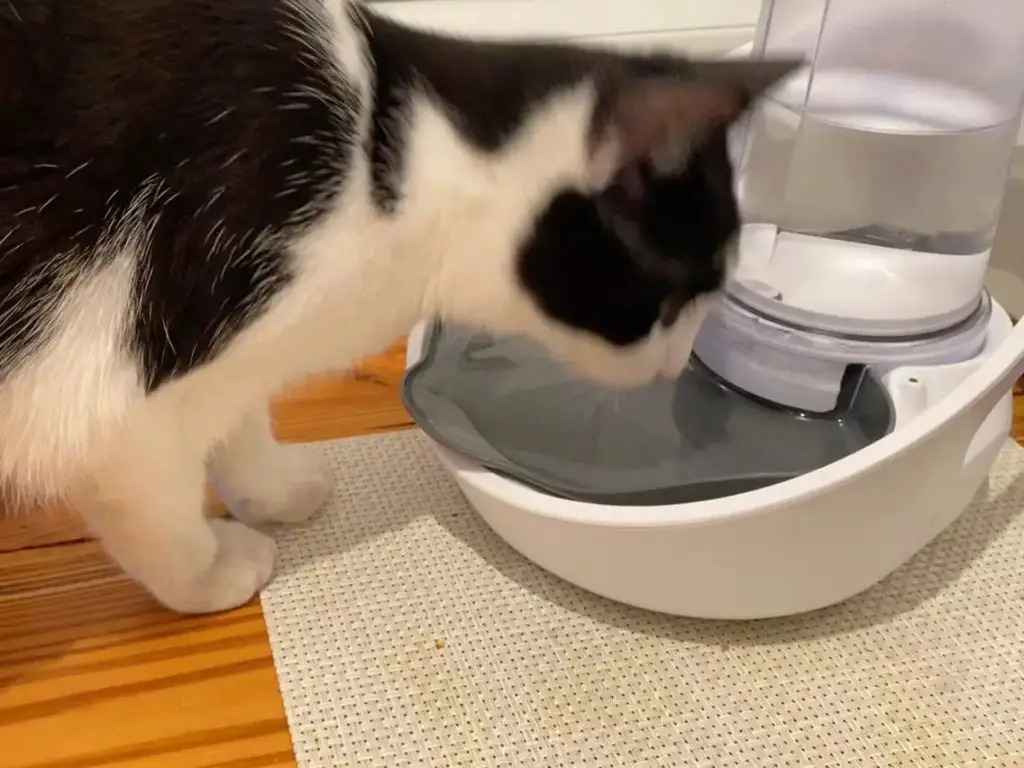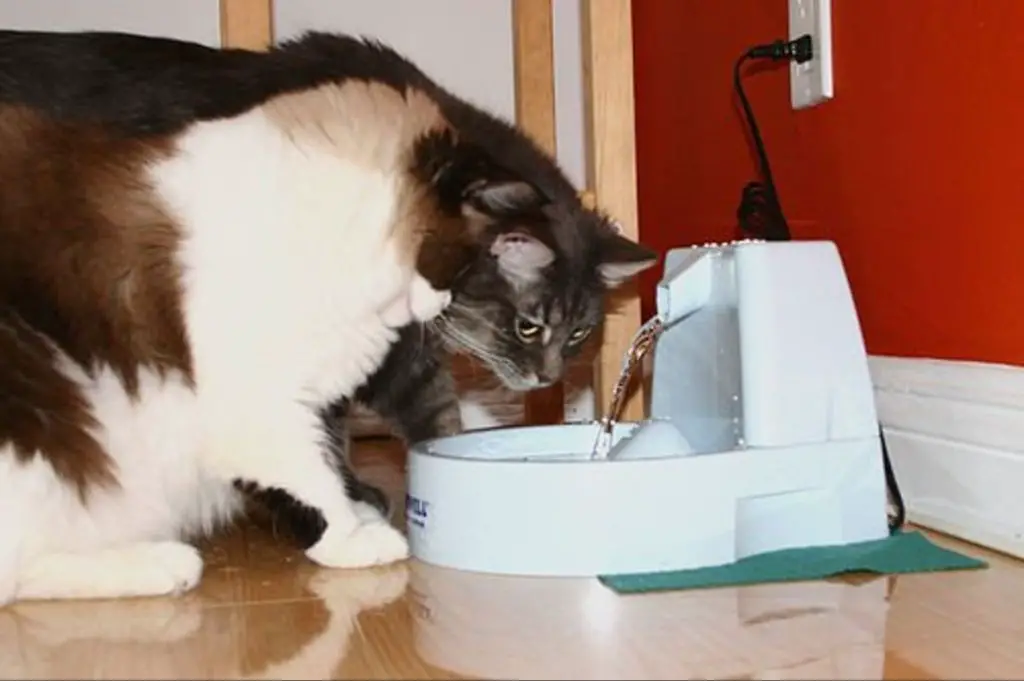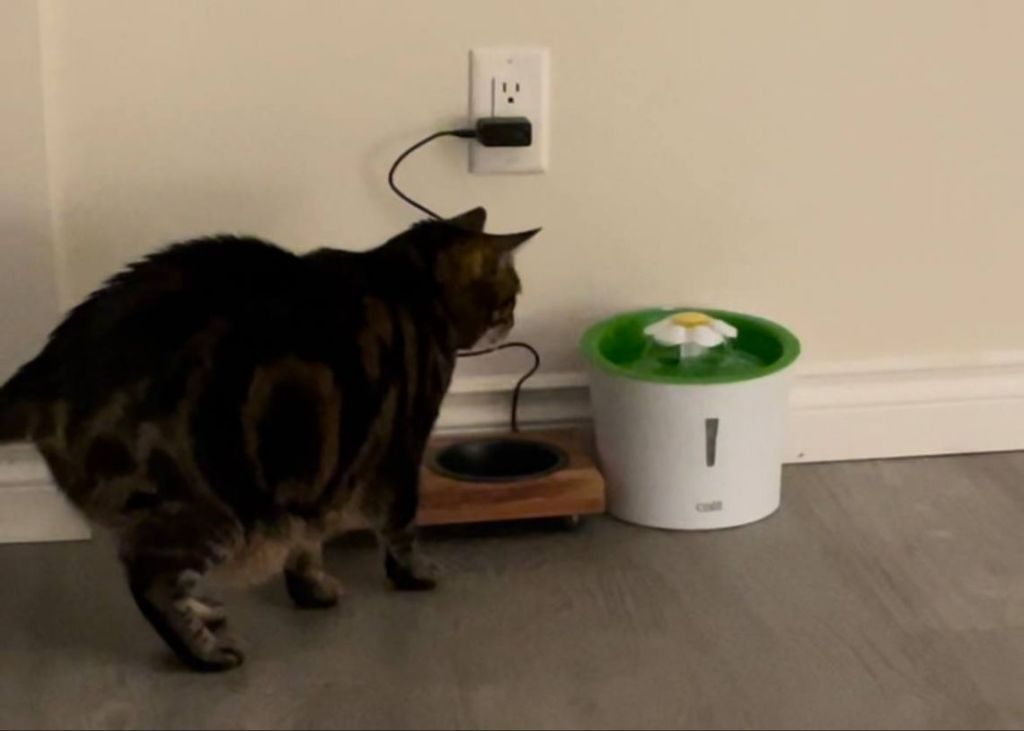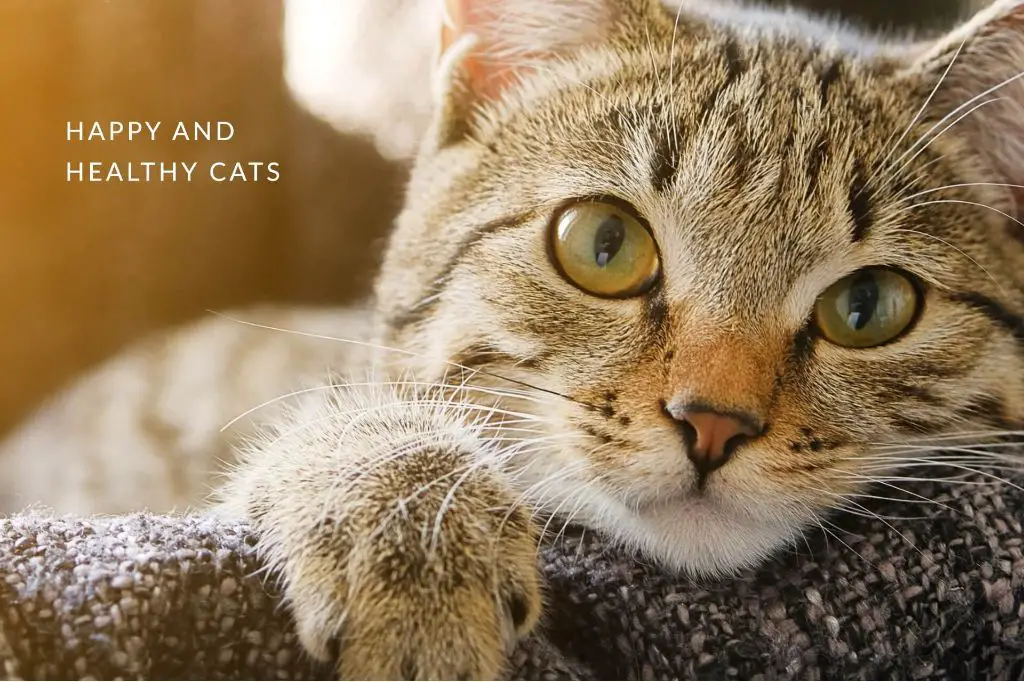According to veterinarians, an alarming percentage of house cats suffer from chronic dehydration. While cats have adapted to get much of their water from food, relying solely on the moisture in food leaves many cats in a constant state of mild to moderate dehydration. This can put cats at higher risk for developing urinary tract infections, kidney disease, constipation, and other health issues over time.
The Cornell Feline Health Center reports that 75% of cats are chronically dehydrated. Cats have naturally low thirst drives compared to other mammals, meaning they don’t drink as much water as they should each day. Since water intake is crucial for good feline health, many cat owners are now investing in cat water fountains to promote hydration.
This guide covers the benefits of cat fountains, how to choose the best one for your cat, proper placement tips, transitioning to a fountain, maintenance, and the important health benefits of keeping your cat well-hydrated.
Benefits of Cat Water Fountains

Cat water fountains provide benefits that encourage proper hydration. The constant circulation and filtration of water makes it more appealing and healthy for cats to drink.
One of the main benefits of cat water fountains is that they provide fresh flowing water, which cats naturally prefer over stagnant water. Cats’ ancestors originated from desert regions and are used to drinking from streams and other moving water sources (Pros and Cons of Pet Water Fountains). The sound and movement of flowing fountain water entices cats to drink more frequently.
Additionally, water fountains filter out impurities, chemicals, and bad tastes from tap water that can discourage cats from drinking enough. The filtration keeps the water fresh and tasting good, which makes cats more inclined to hydrate themselves properly.
By mimicking natural drinking sources and providing cleaner, fresher water, cat fountains effectively encourage proper hydration in cats.
Considerations When Choosing a Cat Water Fountain
There are several important factors to consider when selecting a cat water fountain to ensure it will meet your cat’s needs:
Size/Capacity – Consider the size of your cat when choosing a fountain. Larger, multi-cat households may need a fountain with a bigger capacity. Make sure to get one that can hold enough water to last between refills. Small cats do fine with fountains that hold 0.5-1 gallon, while larger cats or multi-cat homes may need 2-3 gallon capacity (WebMD).
Material – Many fountains are made of plastic, but ceramic, stainless steel, and glass are more hygienic options. Ensure any plastic parts are BPA-free. Stainless steel resists bacteria growth better than plastic or ceramic (Cat Care Solutions).
Filters – Filters help remove hair, debris, and slime. Charcoal filters help eliminate bad tastes/odors. Make sure replacement filters are easy to find.
Flow Rate – Cats prefer a gentle stream of flowing water rather than still water. Ensure the fountain has adjustable flow options.
Easy to Clean – Look for fountains with removable parts that are dishwasher safe. Fewer nooks and crannies make cleaning easier.

Top Recommended Cat Fountains
When choosing a cat water fountain, you’ll want to consider factors like size, material, filtration system, and ease of cleaning. Here are some top picks:
PetSafe Drinkwell Platinum Pet Fountain
The PetSafe Drinkwell Platinum Pet Fountain is made of durable plastic and features a free-falling stream, activated charcoal filter, and large capacity. Pros of this fountain include its quiet motor, adjustable water flow, and dishwasher-safe parts. Potential cons are plastic may show scratches over time and filters need frequent replacing.
Pioneer Stainless Steel Fountain
The Pioneer Stainless Steel Fountain has a minimalist steel design that is easy to clean and maintain. It features a multi-level cascading waterfall and charcoal filter. Pros are it is sturdy, stylish, and made to last. Cons are it’s on the pricier side and may need frequent filter changes.
Catit Flower Fountain
The Catit Flower Fountain has a cute flower design with fresh flowing water. It includes triple-action filters and a transparent view window. Pros are its quiet operation and eye-catching aesthetics. Cons are the plastic flowers may attract cats to play in the water.
Proper Placement of Fountain
When determining where to place your cat’s water fountain, there are some key factors to consider for optimal use:
Ideally, the fountain should be in a quiet, low-traffic area of the home to avoid startling your cat when they’re drinking. Many experts recommend placing it in an area away from their food bowls to promote hydration between meals (Source). Bathrooms or laundry rooms often work well since these spaces tend to be calmer.
Additionally, make sure the fountain is easily accessible – placing it on an elevated surface or in a tight space behind furniture can deter use. Allow enough open area around the fountain so your cat has clear access.
Avoid situating the water fountain next to litter boxes or on the opposite side of the home from food. This can discourage drinking. Also steer clear of high traffic zones where your cat may get startled.
Experiment with different locations if your cat seems hesitant at first. Pay attention to where they tend to relax and drink most naturally, then consider placing it nearby.
Transitioning Your Cat to a Fountain

It can take time and patience to get your cat used to drinking from a fountain, especially if they are accustomed to drinking from a regular bowl. The key is to make the transition gradually and motivate your cat to explore the fountain.
Start by placing the fountain in the area your cat usually drinks and keeping it turned off. Let your cat inspect and get used to having it around for a few days. You can put treats or catnip around the fountain to encourage exploration. Once your cat seems comfortable with it being there, turn the fountain on its lowest flow setting.
Cats prefer fresh running water, so the sound and movement of the fountain water may pique their interest. However, don’t force your cat to drink from it right away. Allow them to adjust to the new sensations at their own pace. You can try dropping treats into the fountain so your cat has to drink the water to fish them out.
Make sure the fountain water is fresh and clean. Cats can be deterred by stagnant or unclean water. Clean the fountain regularly according to the manufacturer’s instructions. Consider adding ice cubes to the fountain as the melting cold water is enticing. Place treats around and in the fountain to motivate drinking. With time, your cat will discover the fountain’s water is fresh and appealing.
Be patient during this transition process. It may take a few weeks for your cat to fully adapt. Keep their regular water bowl available so they stay hydrated. Don’t force or punish them for not using the fountain. With persistence and positive reinforcement, you can get your cat drinking happily from their new water fountain!
Sources:
https://www.jefferspet.com/blog/post/how-to-train-your-cat-to-drink-from-a-cat-water-fountain
Maintaining and Cleaning the Fountain
Keeping your cat fountain clean is crucial for providing your cat with fresh, bacteria-free water. Here are some tips for maintaining and cleaning your cat fountain:
Daily maintenance:
– Check water levels and refill as needed.
– Wipe down exterior of fountain with a damp cloth.
Weekly maintenance:
– Replace filter cartridge. This removes hair, food debris, and other contaminants from the water.
– Thoroughly wash and rinse all plastic components with warm water. Vinegar can be used occasionally to remove hard water deposits and disinfect.
– Wipe down cord and plug.
– Scrub pump with bottle brush.
– Empty, rinse and refill water reservoir.
Monthly maintenance:
– Disassemble fountain and soak parts in hot water and vinegar solution for 5-10 minutes to fully disinfect.
– Unplug pump and examine impeller for signs of wear. Replace pump if needed.
– Consider replacing tubing if grime builds up.
Following this cleaning routine will help keep your cat’s fountain working properly and the water fresh. Consult your specific fountain’s manual for additional care recommendations.
Health Benefits of Proper Hydration
Ensuring your cat drinks plenty of water each day provides some important health benefits, including:
Improved kidney and urinary tract health – Water helps flush toxins from the kidneys and keeps urine diluted to prevent crystals from forming. Dehydration stresses the kidneys and can lead to issues like kidney disease over time.
Healthier skin and coat – When a cat is dehydrated, less nutrition and oxygen reaches the skin, leading to dry, itchy skin and a dull coat. Proper hydration delivers nutrients to keep the skin and fur healthy.
Aids digestion – Water helps transport food through the digestive tract and soften stool. Constipation is common in dehydrated cats. Drinking enough water prevents gastrointestinal issues.
Signs Your Cat is Dehydrated
Dehydration in cats can be difficult to spot at first, but there are some key signs to look out for. According to PetMD, the most obvious sign is dry or sticky gums and nose. A healthy hydrated cat should have moist, slimy gums. If their gums and nose feel dry or tacky, it likely indicates dehydration.
Lethargy and weakness is another potential red flag. Dehydrated cats tend to have less energy and be more inactive. They may sleep more than usual or seem unwilling to move around much. This fatigue results from the lack of fluids and electrolyte imbalance in their body.
Pay attention to your cat’s urine as well. Dehydrated cats often have darker, more concentrated urine. Healthy cat urine should be pale yellow and not too dark. The increase in urine concentration happens as the body tries to conserve water.
Finally, check their skin elasticity. Gently pinch and release the skin on the back of their neck. If the skin is slow to snap back and tents up, it signifies dehydration. Properly hydrated cats will have more elastic skin that quickly returns to its normal position.
Conclusion
In summary, cat water fountains have several benefits that make them worth considering for many cat owners. The circulating water encourages cats to drink more, helping to promote urinary tract health and prevent conditions like UTIs or kidney disease. The filtration also keeps the water fresher for longer versus a traditional water bowl.

When choosing a cat fountain, look for durable materials, an appropriate size for your cat, and quiet operation. Be sure to clean the fountain regularly and watch for signs your cat is actually using it. With patience and training, most cats can transition to a fountain. Proper hydration supports your cat’s health and happiness.
If you want to provide your cat with a plentiful supply of fresh, circulating water, a cat fountain is certainly worth considering. Just be sure to choose the right fountain for your cat and budget, and take care to maintain it. With a good cat water fountain in place, you can have peace of mind knowing your cat is staying optimally hydrated.

